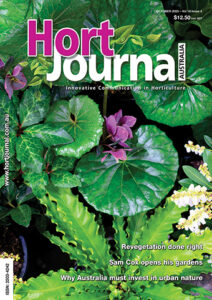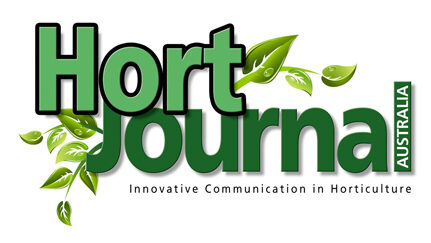
Springing into resilience
The first of September marks the ‘official’ start of spring in Australia, although the horticultural industry knows that this seasonal marker varies from year to year, and may increasingly do so in the future. Attending The Landscape Association’s (TLA) 2025 Landscape Expo recently, I spoke with many nursery representatives who told me they were preparing for what is typically the busiest time of the year for them. You can read some of their stories inside these pages.
We also share news of recent updates to the Which Plant Where website, a climate-ready plant selector web-based tool that helps people choose the right plants for Australian cities for the weather conditions of today and into the future. If you are a landscaper and you are not using this tool, now is the perfect time to start. This is one of my favourite trusted sources that I use to select plants for my landscape designs to ensure they stand up to a changing climate.
As I write this editorial, the Federal Government has just set a national target to reduce emissions by 62–70% below 2005 levels by 2035, on the way to net zero by 2050, after releasing its National Climate Risk Assessment (NCRA) and accompanying National Adaptation Plan[GS1] . Key findings in the former show that future climate hazards in Australia include:
- Our climate has already changed, and will continue to change, even if global temperatures stabilise. Stabilising global temperatures at +1.5°C, +2°C, or +3°C above pre-industrial levels will reduce some, but not all, climate impacts. Changes in the oceans, for example, are locked in for centuries, as oceans will keep warming, rising, acidifying, and losing oxygen.
- Future changes in Australia’s climate will not occur gradually or smoothly. They will include more climate variability, some rapid trends, and will likely cross important thresholds.
- Tipping points are not well understood or accounted for in climate projections. With every fractional increase in global warming, there is an increased risk of triggering abrupt changes or surpassing critical tipping points that will impact Australia.
Some of the key findings within the National Climate Risk Assessment include:
- More frequent and severe extreme events like floods, fires and cyclones.
- Sea level rise could put 1.5 million more people in high-risk coastal areas by 2050.
- Climate change will increase costs, reduce productivity and worsen inequalities.
- Heatwaves could lead to more heat-related deaths, especially in northern Australia.
- Australia’s unique ecosystems are under threat. By 2050, up to 70% of native plant species could face conditions outside their current climate range, risking species loss and ecosystem collapse.
The National Climate Risk Assessment identifies 11 priority risks across 7 key systems, including primary industries and food, under which horticulture receives one mention in the National Adaptation Plan. We know though that our industry has had more than its fair share of knocks in recent years due to extreme weather events including hailstorms and severe winds damaging greenhouses, irrigation systems and young plants, and flooding leaving nurseries under water.
Despite these setbacks, many of you are fighting back, demonstrating resilience, innovation and determination to secure a stronger future for horticulture. I invite you to share your stories with our readers to help them better prepare for a climate-constrained future. What challenges have you faced and how have you overcome them?
I look forward to your stories and insights.
Until next time,
Gabrielle Stannus and your Hort Journal team
